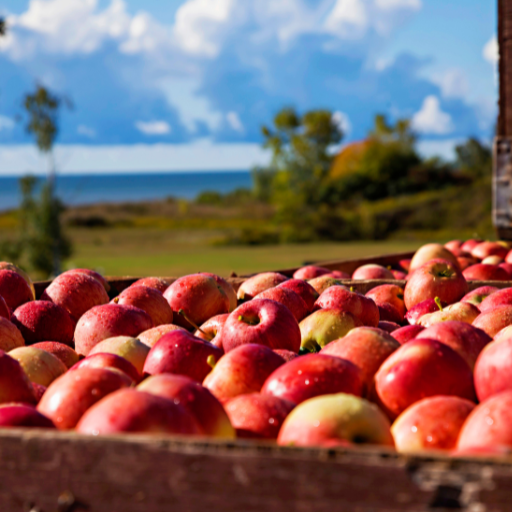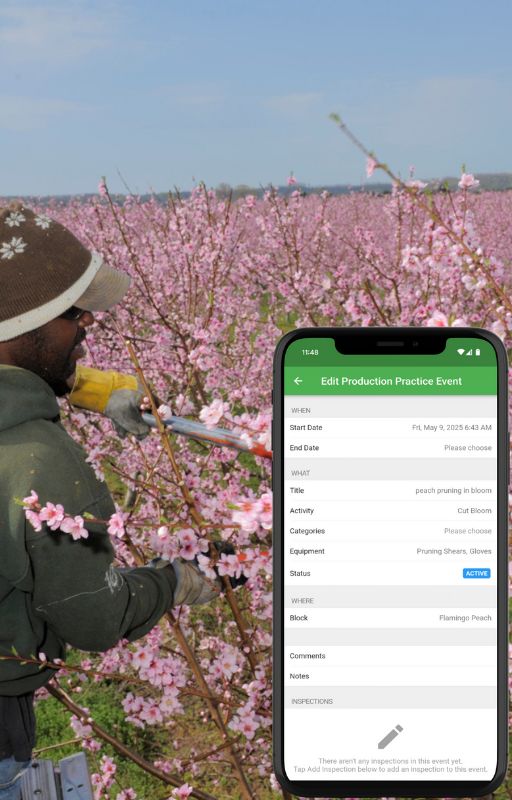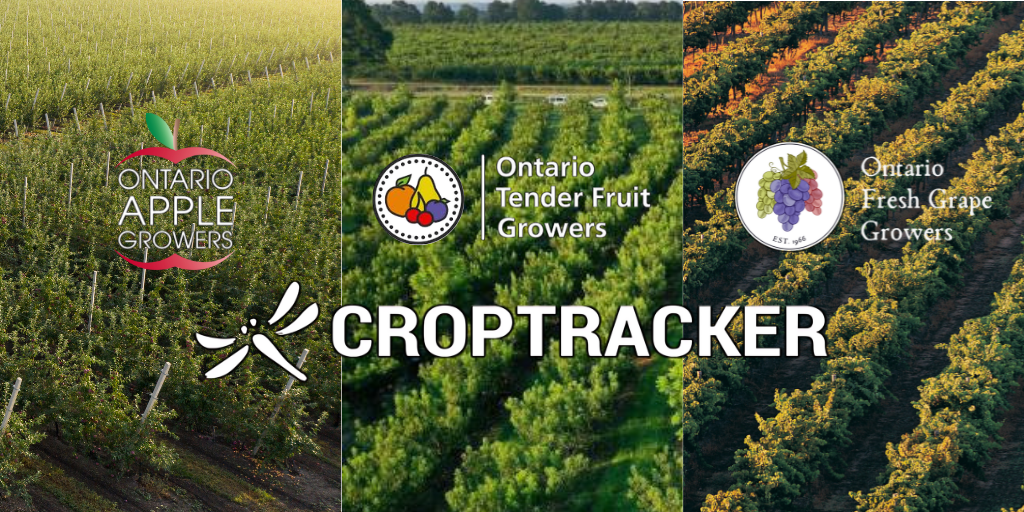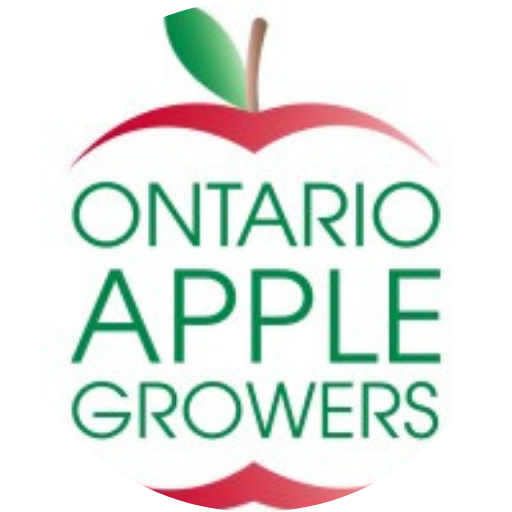In this special edition of our Croptracker Customer Spotlight series, we take a closer look at several growing association users. The Ontario Apple Growers (OAG), Tender Fruit Growers (OTF) and Fresh Grape Growers (OFGG) worked with Croptracker to develop and launch our Association level features, now in use by several grower associations around the world. In this article we will explore the benefits for Croptracker Association users through the lens of their staff, Kelly Ciceran, Sarah Marshall and Larissa Osborne. We will also explore some of the advantages to their organization’s growing members Croptracker accounts.
Data by and for the growers: the role of growing associations
The agricultural sector is in the midst of a profound transformation, moving from a tradition-based industry to a data-driven enterprise. Growers are no longer simply cultivating crops; they are managing intricate business ecosystems where success is increasingly tied to the ability to collect, analyze, and act on information. This shift is a direct response to a complex global environment characterized by high-stakes market volatility, a growing world population, and mounting consumer demand for transparency and sustainability.

Photo courtesy of Farm & Food Care
In this evolving landscape, grower associations, such as the Ontario Apple Growers, the Ontario Tender Fruit Growers, and Fresh Grape Growers, occupy a unique and critical position. Their role extends beyond traditional advocacy and member support to become a trusted, non-commercial nexus for data aggregation. An association is a central, independent entity that can collect sensitive farm-level data—such as yields, growing methods, chemical and fertilizer use, and sales—without the inherent commercial conflicts of interest that exist with competing agribusinesses.
The OAG, OTF and OFGG understood this assignment very early, seeking to support their members in collecting, organizing and digitizing their data 20 years ago. Under the direction of their grower boards, these three organizations began working with Croptracker to support better food safety and traceability systems, beginning with spray application tracking and field mapping. Larissa Osborne, Project Manager for all three organizations explains, “Growers needed a tool to automate tracking crop protection applications in their orchards and one that was able to track fruit straight from the orchard through the value chain and to consumers. The system needed to be able to reliably respond in the event of a recall situation.”
Ontario growing associations and Croptracker’s beginning
In 2006, the Ontario Apple Growers approached Croptracker founder, Matt Deir, explaining their need for a system to collect their member’s spray data. This system needed to be able to support the individual needs of the grower as well as the association. Growers needed a place to input and store their application records for informing their own practices, supply ordering and audit processes; and the OAG needed to get a better understanding of the challenges facing their growers to inform best practice recommendations and board priorities.
We realized we needed to automate all of that reporting because it was becoming too onerous and too time consuming for growers to continue to do it manually on paper.
This request led not only to the development of the Spray module, but also to the beginnings of the Association system, where all OAG, OTF and OFGG accounts could be linked for aggregate reporting, eliminating both the need for growers to write and store paper records, and for the association to compile and report on data from hundreds of growers with days of data entry.

Photo courtesy of Farm & Food Care
Separate and together: data security and collection
The practical challenges of collecting and managing data from a diverse group of members are significant. Prior to Croptracker, OAG/OTF/OFGG members relied on a variety of standalone software systems and manual processes that do not communicate with each other, resulting in incompatible data formats and disconnected systems.
With Croptracker, each OAG/OTF/OFGG growing member organization has their own Croptracker account under an Association level account. From the Association account, Larissa is able to add new member organizations, update contact info and communicate with each association's members individually or collectively by issuing emails and survey prompts. This centralized member database provides enormous time saving and data organization for all three orgs.
Croptracker modernizes the industry’s data management and provides a means by which virtually any and all data collected at the farm/packer/storage/shipper or processor level could be linked, collected and aggregated for industry-wide reporting and strategic planning.
To ensure data hygiene within Croptracker Association level accounts, access to information is partitioned by the user. From Larissa’s association account she can view information in aggregate reports and individual survey responses for all three organizations. Kelly Ciceran, who manages the OAG, is only able to see profiles, forms and responses for OAG members and Sarah is able to see all the OTF and OFGG member profiles, association product pricing, form responses and related reports.
To maintain data security and organization, OAG/OTF/OFGG staff do not see individual farm account details like worker records and every day farm activities.
What’s in a member account?
Members of the OAG, OTF, and OFGG have an individual account view when they login and are only able to see their own information. As part of the Association level access all three organizations have set up with Croptracker, Grower, Dealer/Marketer and Processing members have access to nearly all Croptracker modules.
Member accounts include:
- 10 unique account users
- Farm Manager GIS Mapping
- Spray
- Harvest
- Punch Clock
- Production Practice
- Storage
- Packing
- Shipping
- Receiving
- Order Desk
- Quality Control
- GAP Reports and Audits
- Irrigation
- Harvest Quality Vision
- Crop Load Vision
- Starch Quality Vision
- File Storage
- Association Form Access

Photo courtesy of Farm & Food Care
Not all growers use their Croptracker accounts the same way. In their own accounts, OTF/OAG/OFGG members control their own information and set up their own processes to suit them. Croptacker’s support staff work with Growers to determine the best workflows for them and ensure they are able to access and submit the form responses sent by Kelly, Sarah and Larissa.
What’s in it for the grower?
For some growers, the value proposition of sharing data is often unclear: why should they fill out a grower or processor form? Why should they share their acreage and chemical use data? What’s in it for them? The value created by the data sharing process between growing members and their board is not a one-way street; it forms a reciprocal loop. The association first collects and aggregates farm-level data on yields, and sales information. It then translates this raw data into compelling, high-level economic statistics through reports to support their missions.
Individual member records
Croptracker’s farm management tools, available to OAG/OTF/OFGG Association members, provide a tremendous amount of value for their day to day operations and long term planning. Users report saving hours on payroll processes, smooth audit processes and improved traceability processes. Sarah, Larissa and Kelly hear this feedback from their growing members consistently.
It’s grower friendly. Croptracker was built by growers, for growers... You can’t say that about a lot of software programs these days, where the actual users inform the building of it.
Croptracker has always been designed with growers, packers, distributors, industry organizations at the top of mind.
The Croptracker team understands the unique challenges faced by apple growers and have designed software solutions that seamlessly integrate into the producers’ workflows. Whether it’s tracking sprays, managing employees, or ensuring compliance with regulations, Croptracker’s interfaces have made a tangible impact on our members’ daily operations.
For detailed examples of how some members use their accounts, see some of previous Croptracker customer spotlights on Algoma Orchards, Schuyler Farms and Tregunno Fruit Farms.
Association level data
Growing associations' role in data aggregation is crucial for creating collective knowledge and a competitive advantage that no single member could achieve on their own. By pooling and anonymizing data, associations can generate a holistic view of the industry, identifying trends, benchmarks, and opportunities that are invisible at the individual farm level. Larissa points gives a good example below:
[The] Ontario Apple Storage Holding [form], which collects data from Ontario apple storage holders across the province, provides the industry with monthly apple inventory movement charts to indicate when and which varieties need a push due to sluggish movement in the market and which are moving well.
Larissa uses the form generation, automatic emailing and response review functions of the Association account to ensure all data about Apple storage is up to date. She checks all member responses are submitted correctly before generating the Apple Storage Holding report in Croptracker to present to the board every month. Previously this task was a long process of phone calls and error prone spreadsheet updating. Now this information is streamlined and standardized so the apple sector has the best available and timely information.

Photo courtesy of Farm & Food Care
By aggregating sales and yield data in Croptracker’s Association account, the OTF, and OFGG gain comprehensive, holistic views of market dynamics and a greater understanding of total production, sales volume, and price trends. This collective intelligence allows the association to advise its members on optimal selling times, create marketing campaigns and even set prices and fees fairly.
Additionally, aggregated data provides an evidence-based foundation for the OAG, OTF and OFGG board’s advocacy efforts. When these associations can back their requests with hard numbers, it dramatically increases their leverage in lobbying, public relations, and securing government funding. Croptracker helps ensure the data Ontario’s tree fruit growers need to push for supportive policy is readily available and accurate.
Successful lobbying efforts result in tangible outcomes for growers, such as government funding or policy changes. This funding directly benefits the members, encouraging them to continue sharing data and reinforcing the value of the association. This creates a cycle where data collection directly fuels the association's core mission and provides a tangible return on investment for its members.
Unlocking a stronger future for Ontario's growers through data and collaboration
Ultimately, the collaboration between Croptracker and the Ontario Apple Growers, Tender Fruit Growers, and Fresh Grape Growers is a powerful example of how technology can support and strengthen the agricultural community. By providing a secure, centralized, and grower-friendly platform, Croptracker has enabled these associations to move beyond traditional advocacy and become trusted hubs for data-driven insights. This partnership highlights a self-sustaining cycle where individual growers benefit from streamlined operations and enhanced traceability, while their collective, anonymized data empowers the associations to advocate for the entire industry.
The success of this model proves that when growers and associations work together, sharing data for the common good, they can unlock a competitive advantage that benefits everyone. This approach not only modernizes the industry but also builds a stronger, more resilient future for Ontario’s growers, ensuring they have the tools and information they need to thrive in an increasingly complex global market.





